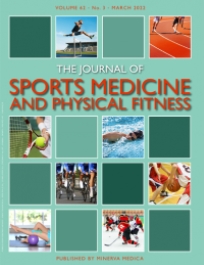Crotti M1, Bosio A2, Invernizzi PL3
1, School of Exercise and Sports Sciences, Università degli Studi di Milano, Milan, Italy;2, Human Performance Laboratory, Mapeisport Research Centre, Varese, Italy;3, Department of Biomedical Sciences for Health, Università degli studi di Milano, Milan, Italy

BACKGROUND: Few studies examined the validity of fitness tests based on perception scales. The field-based fitness tests batteries are composed by maximal tests and currently, a battery of submaximal tests does not exist. METHODS: Seventeen physically active male participants (age 40,5 ± 10,7 years) performed the Multistage fitness test, the Crunch test, the Push-up test and a Trunk flexion test with a sub maximal protocol based on perceptual variables that were defined as non-validated submaximal. The mentioned tests were repeated three times to assess their reliability. The participants also performed four validated maximal tests comprising a velocity dependent ramp test on the treadmill, the Crunch test, the Push-up test, and Sit-and-reach test. The submaximal tests were correlated to the maximal ones to assess their criterion validity. RESULTS: All the submaximal tests showed an ICC superior to 0.8 apart from the sub maximal Crunch test. The correlation between maximal treadmill test and submaximal Multistage fitness test was 0.77. The correlation between Sit-and-reach test and submaximal Trunk flexion test was 0.71. Correlations equal to 0.66 and 0.60 were found between the maximal and submaximal Crunch test and push-up test respectively. CONCLUSIONS: The use of submaximal tests based on a fixed value of perception can represent a suitable tool to assess cardiorespiratory fitness and flexibility because of their correlation with the corresponding maximal evaluation tests and because of their reliability. On the contrary, muscular endurance capacity seems not to be assessable in the same manner.
J Sports Med Phys Fitness. 2017 Mar 30. DOI: 10.23736/S0022-4707.17.07199-7